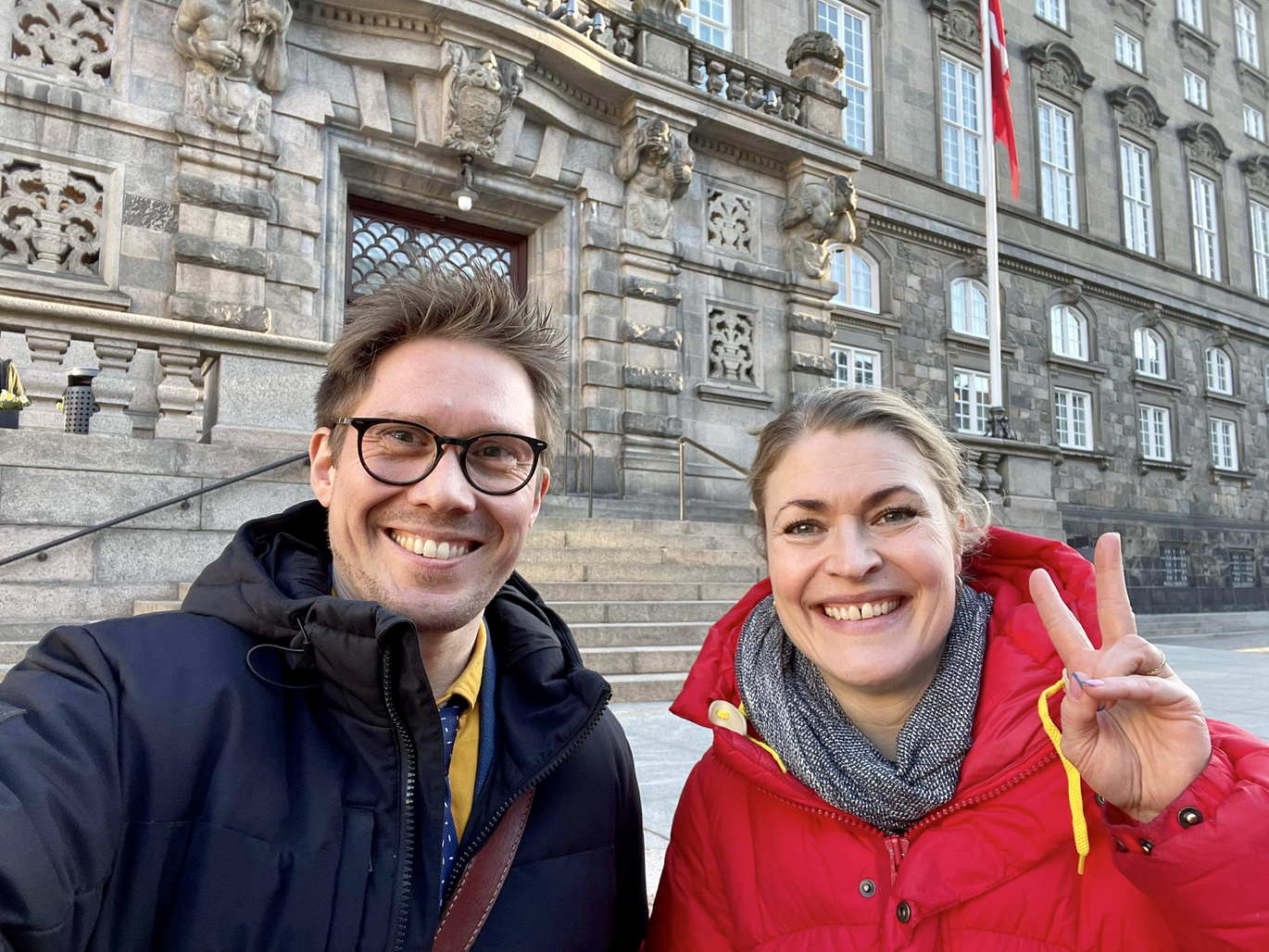COMMUNICATION FROM DAY 1 HAS ADDED MOMENTUM TO THE H2020 FEMALE PROJECT
Chief Consultant Ulrik Bak Kirk is a coordinator on the H2020 FEMaLe project, and he pulled out all the stops on communication right from the start when the grant for the FEMaLe project was secured. Getting the project off the ground required much more than just the usual website and publication of research articles.

His mission, therefore, was to make the project visible and differentiate it from others from day 1. He also wanted to set up a welcoming platform for the final results of the project.
With his research colleagues in Aarhus and project partners in Europe, Ulrik Bak Kirk put together an extraordinary communication effort as early as in the Impact section of the application.
And that's important if you want all the partners to be actively involved in communication from day one.
“If I’d been a more traditional scientific coordinator, we would have been satisfied with a website and a couple of SoMe profiles. Business as usual,” says Ulrik Kirk Bak.
But he and the others on the FEMaLe project wanted much more, and they started by launching an ambitious strategy.
“The project does have a website, but that’s probably where the lowest traffic is,” says Ulrik Kirk Bak, who points out that people today use many other channels, such as social media, podcasts, webinars, etc.
“Of course, we’ve also written scientific articles, presented posters and given oral talks at conferences. But we’ve also concentrated on press releases and getting our research results translated and out to the layman,” he says. “For example, the FEMaLe project has made a lot of social media posts, blog posts, webinars and podcasts.”
Another important point for Ulrik Kirk Bak is that having an opinion and joining the public debate has also been very beneficial, and they have written opinion pieces in which they use their research to back up what they think politicians should do about endometriosis problems.
“We were inspired early on by our Scottish partner from the University of Edinburgh, where research communication is an integrated element in PhD programmes. Even the Scottish professors text regularly with journalists, giving them direct access to media such as The Guardian,” he explains.
Can you communicate about the process?
“Yes,” is the coordinator's short answer. “Because you can't just wait until you have final results to share. It's about building a critical mass that will interact with the unique content as quickly as possible, so that your project has a communication platform that will be rewarded by algorithms. We had to be creative with our content until we had results. For example, we highlighted our partners and we gave the disease a face in a campaign with the patient organisation,” he says.
“You also need to think about timing and examine the effects of your communication. We track everything we do on social media and in communication in general. We get a huge boost for the project when, for example, in an online meeting we can give virtual high-fives when a post reaches more than 30,000. Researchers on the FEMaLe project can see what they and we get out of it, and it motivates individuals to keep going and do more. Moreover, you feel very proud when your research is used actively," says Ulrik Krik Bak.
An extra element is that they have made research out of their communication. By consistently monitoring their communication, they have been able to write a scientific article about it. “The result is that we’ve achieved a good combination of research, innovation and communication.”
In dialogue with politicians
Ulrik Kirk Bak believes that communication is crucial to support research and innovation. And contact with politicians has really helped the project along. Working with journalist Louise Dreisig, who has written a book on endometriosis, they were invited to a make a short presentation to the Health Committee of the Danish parliament in March 2023. They were then invited to a closed consultation in May 2023, which led to a public consultation in November 2023. In the same month, FEMaLe also had an event in Brussels.
“It was really strong output. But it’s demanded a lot of hard work. We’ve had constant focus on advocacy, alliances, relationship building, newsworthiness, timing, topicality, and relevance. And we’ve always acted proactively and thought about agenda-setting,” says Ulrik Kirk Bak.
He has also found that once you have been in the media a few times, they are more likely to come back to you themselves. “The media is also on many channels. So if I participate in a programme, a clip will be shared on their social media channels. For example, the last programme I was on was promoted and got 80,000 views on Instagram and Facebook. Not many articles are read 80,000 times,” says a satisfied coordinator.
Facts about the project: The project is an HE Coordinator project
FEMaLe (Finding Endometriosis using Machine Learning) is a major international research and innovation project aiming to improve the lives of patients with endometriosis. The EU is supporting the project with DKK 45 million from the Horizon 2020 pool, and it will run from 1 January 2021 up to 31 December 2024.
Research into the value of communication via co-created SoMe media campaigns
Not "just a bad period"- The impact of a co-created endometriosis social media health campaign: a mixed methods study.
Social media profiles
• LinkedIn
• Twitter/X
• Instagram
• YouTube